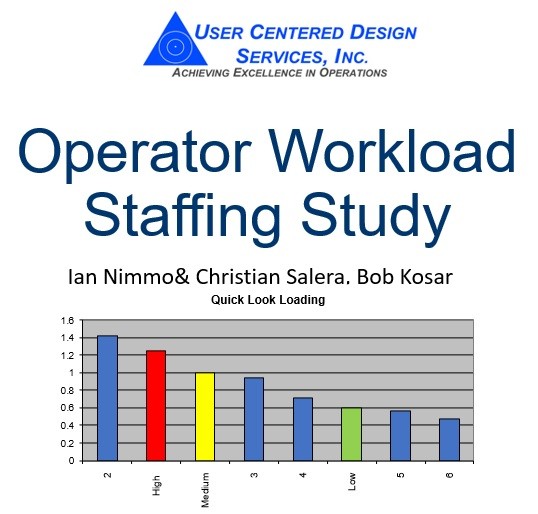Consolidating 2 or More Operator Positions into 1 Position

Don’t change workload without knowing the risks:
We are often asked to identify where operator responsibilities can be moved from one position to another. In some cases, clients believe they can combine 2 operator positions into one. We have discovered some positions can be consolidated in specific units in the plant. Keep in mind, you have to have a provable workload scoring method, a fatigue evaluation, also you have to do an MOC on the proposed position change to ensure the additional responsibilities do not impact the operator’s ability to manage abnormal situations that have happened in the past or could happen in the future.
We use a (one of a kind) Automation Index Model (AIM) product to score each operator position. It reads P&ID’s and PFD’s that are associated to a specific operator position and provides a score. The score is determined by the complexity of the process and the equipment that is being monitored by the operator. We also use a fatigue index model to ensure overtime hours do not impact performance during normal operations. You can imagine this is a complex study that must hold true when challenged.
Operator staffing studies have become extremely popular these days. Manpower costs are rising and it may be surprising to know that personnel make up 82 percent of operating costs in the average chemical plant. Much more than maintenance and equipment replacement costs. If we are spending millions each year on people and less on automation and maintenance and we want to get the best return on this investment, we have to identify how to improve human performance and how to do more with less without risk.
We recently performed a study for several plants under one large company. They are focused on reducing operating costs and want to find opportunities to improve human performance, specifically identifying where or how responsibilities can be managed better by one individual instead of 3 individuals. We find lots of opportunity in supervisor positions and ways to combine responsibilities between field and operator positions.
Some of the sites are asking us to remove the fatigue data we collected during the study. We examine the impact of shift work and the risk it exposes when overtime levels are increased. If the operator’s workload is low, the impact of overtime may be manageable but should be acknowledged and reviewed for better understanding of risks.
If the workload is high and stressful, adding excessive overtime outside recommended hours of service puts operators at increased risk for human error, especially on the tail end of a night shift. So if the fatigue risk index is high, we recommend that this is acknowledged through the staffing MOC process and a fatigue mitigation policy is employed. An example from a site shows that some operators are exposed to twice the normal fatigue risk which must be acknowledged and reviewed. For these positions, we have to take a close look at the potential for a costly mistake or safety incident. What is the worst case scenario if the operator misses this alarm?
In some cases, removing the fatigue analysis from the report may be due to reasons we might not agree with, however it is absolutely essential to make the site aware that they are exposing the organization to a fatigue-related incident. This is in line with API RP 755, which is not implemented at most sites. Some have a partial record of Hours of Service acknowledged, but we find most are not doing checks against it to flag employees with high levels and many sites are not mitigating this.
For example, an operator with a risk index over 2.0 should be given a lower workload and less critical job during that night. If that is not possible, they should be instructed not to do any job task that is outside the normal routine without having a second person confirm actions, hence acknowledging and reducing operational risks. This meets the CSB investigation of BP Texas City incident and the API initiative to provide a recommended practice. www.mycontrolroom.com
